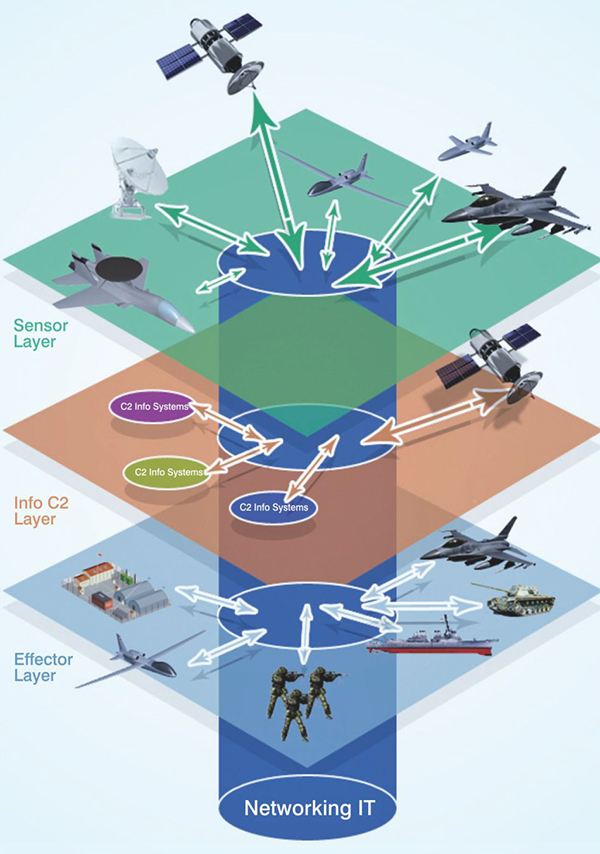Digital Transformation of the Armed Forces
Sovereignty and Winnability of wars hinge on defence digitisation. Warfare is changing and so are the threats, especially for India and there are collusive threats from neighbouring nations, border intrusions across terrestrial borders and the new phenomenon of multi-front warfare spanning borders, electronic and cyber domains. Armed forces across the world are digitalising and building network-centric defence ecosystems to bolster combat readiness, modernise battlefield operations, and build strategic deterrence.
There needs to be seamless flow of information, data based decision-making and tight security protocols at the network level.
Keeping in mind the impact of new technologies on warfare as proved by recent conflicts, the Armed Forces are undertaking “Digitisation and Networking” with the latest technologies providing for efficient communication networks, effective network-centric operations, C4ISR, Decision Support Systems, all addressing Info, Data and Big Data challenges and vulnerabilities.
The move toward network-centric warfare ability includes use of dedicated satellites, special optic fibre networks allowing real time data and communication. The key is Integrated Communication & Control; Situational awareness & Common Operational Picture; Communication for Kinetic Operations; Evolved Cyber and Space prowess; and Collaboration between tri-Services.
The Defence Space Agency and Defence Cyber Agency will facilitate this integration.
The needs of the three Services vary. The IAF and Navy need network centricity the most. AFNET, on which will rides the IACCS providing connectivity between all the airborne platforms and ground platforms, integrates the ability to use data and images in real time across many battlefields.
The Navy’s, newer communication tools allow warships to see real time information of what is happening in say Karachi or in Malacca Straits or even over the South China Sea.
The Army needs tactical information on ground for which UAVs and other sensors beam live pictures and provide geo-locations of targets for engagement.
Digitisation Imperatives
Enabling C4ISR – command, control, communications, computers, intelligence, surveillance and reconnaissance – is the essence of digitisation of the battlefield in all domains. Command and Control, Fire Control and Combat Support Systems are warfighting facilities that will provide accurate and real-time combat support information to the CDS, the Theater Commanders, Task Force Commanders and other commanders at various levels as needed. The Service Chiefs and the heads of support services such as Supplies, Transportation, Ordnance Stores, equipment, ammunition, Repair and maintenance facilities, etc., will also be utilising the facility.
A robust and a secure communication infrastructure, sensors, interoperable systems are all mandatory for creating a digitised battlefield environment. Sensors covering the whole spectrum of the battle space to include thermal, infrared, sound and electromagnetic sensors, aerial photography, digital satellite, surveillance and reconnaissance systems, mounted in various platforms such as spacecraft, UAVs, aircrafts, land vehicles, ships, and personal battlefield systems combined with other sources of information will fuse information which is an essential dimension of situational awareness.
Digitisation will facilitate exercise of command, instant grouping and regrouping in inter-Services environment, provide commanders a clear picture of the operational situation, logistics monitoring, concentration of fire power from widely separated weapon platforms and assets of all the three Services, multidimensional coordination of joint operations and substitutes long-winded voice communication with real time data including imageries.
India already has expansive and secure defence networks across the three Services, but some are decades old and need to be upgraded in view of the changing scenario. There is an urgent need to unify, fortify, and modernise country’s defence networks with Interoperability of Networks, Technology-led security solutions, and Cyber security architecture.
New Technologies
The defence sector should adopting digital technologies like IoT, AI, Big Data, and AR/VR in an effort to bring out more efficiency to military missions, automate operations, improve precision attacks and reduce casualties and collateral damage.



















